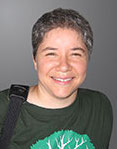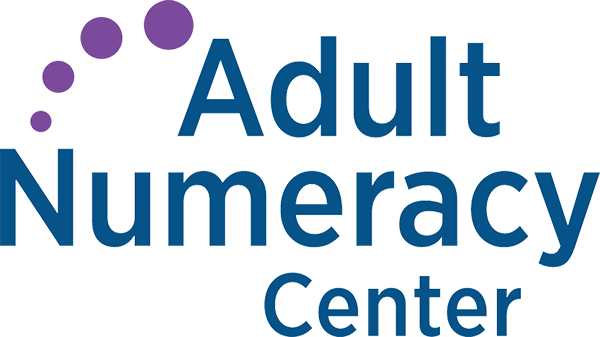What’s Right with Wrong Answers
by Sarah Lonberg-Lew
I used to feel awkward when my students came up with wrong answers. I didn’t want to embarrass or discourage them, so I felt that the kindest thing to do was to say, as briefly as possible, “That’s not quite right – try again.” I even avoided using the word “wrong”. However, in my rush to save my students from potential bad feelings, I missed an opportunity to find what was good and valuable in their reasoning. And when students reason, there is always something valuable in their reasoning, even if it is wrong.
Recently a spirited and unexpected discussion took place in my classroom when I posed a question that was looking for an even number and to which the answer was 50. About half of the students spoke up indignantly, saying that there was something wrong with the question because 50 was not an even number (and I felt very gratified that my students felt comfortable challenging me on that). Instead of shutting down the discussion by explaining why I was right, I immediately backed down from my assertion that 50 was even to give space for them to explore the question. I asked them for their reasoning and it was interesting and thoughtful, though ultimately incorrect.
The main line of thinking seemed to be that there was only one real number in 50, and that was 5 – the zero didn’t count. Since 5 is odd, 50 must be odd as well. When pressed to dig deeper into this idea, the students said that even numbers had to end with an even number and that zero was not an even number. This got us thinking about what it means for a number to be even (way off topic, but very worth the detour, in my opinion). We arrived at quite a conundrum when we came up with two meanings for an even number that seemed to contradict each other. One student decided that 50 was indeed even because she counted by 2s and hit 50. Others felt sure that the last digit had to be divisible by two and this was not the case with zero because there was nothing to divide. This felt a bit thorny, but we were eventually able to agree that zero could be fairly divided into two parts because each of the two parts would be the same size.
At this point one of the students engaged in my favorite type of incorrect reasoning. She said, “If 50 is even because it can be divided by 2, and 50 divided by 2 is 25, doesn’t that mean 25 is even also?” I love this reasoning because it isn’t really incorrect at all, it’s just incomplete. This student was stretching, looking for patterns, making a conjecture. She was being mathematically adventurous. She just stopped before reaching the essential step of investigating her conjecture. I encouraged her to explore her idea and she quickly figured out for herself that it was not correct, but I also jumped on the opportunity to call out what an excellent question it was. By stretching and conjecturing, she was showing the first part of sophisticated mathematical thinking. The second part, asking whether the conjecture was true in this case and whether it will be true in every case, is the part she hadn’t mastered yet. But, what better time to talk about the nature of mathematical reasoning than when student has already come part of the way just by following her intuition?
Throughout the CCRSAE we find calls for students to apply and extend understanding, and this is actually something students seem to do naturally, although not always correctly. When students present faulty reasoning, the fault is often that they have made it only to the conjecture phase and stopped there. By calling out the positive parts of students’ reasoning and taking the opportunity to model the rest of the process, we can boost their confidence and also help them move further along their path to using the third standard for mathematical practice: Construct viable arguments and critique the reasoning of others.
At the end of the discussion, those students who had advocated for the wrong answer or advanced incorrect reasoning felt energized and like they had learned something valuable. I even noticed one of them practicing labeling numbers as even or odd in her notebook days later.
When a wrong answer that a student has worked hard for is simply swept under the rug, it can really hurt. It teaches that there was nothing valuable in the effort and that student may very well decide that it is not worth it to try so hard if she thinks her chances of getting the problem right might be just as good if she just guesses. And she wouldn’t feel so bad about making a wrong guess because she hadn’t really been trying in the first place.
By finding and celebrating what is positive in students’ reasoning, by celebrating even those links that show logical but incorrect thinking, I hope I am making the terrain of reasoning and risk-taking less intimidating to my students. When they can feel good about working hard on a problem, even when they get it wrong, they will be less afraid to try.
These days I have a new approach. I strive to create a classroom culture where we are not ashamed of wrong answers because they mean that we have taken risks and thought deeply, and because they provided us with opportunities to learn. Now I am not afraid to use the word “wrong.” I come right out and say, “That was excellent reasoning! Unfortunately you arrived at a wrong answer, but there were a lot of parts that made sense. Let’s see if we can figure out where it went wrong.”
=======================================================================
 Sarah Lonberg-Lew has been teaching and tutoring math in one form or another since she was in the tenth grade. She has worked with students ranging in age from 7 to 70, but currently focuses on adult basic education and high school equivalency. She teaches in adult education programs in both Gloucester and Danvers, Massachusetts. Sarah’s work with the SABES numeracy team includes facilitating trainings and assisting programs with curriculum development. She is the Massachusetts state representative for the Adult Numeracy Network.
Sarah Lonberg-Lew has been teaching and tutoring math in one form or another since she was in the tenth grade. She has worked with students ranging in age from 7 to 70, but currently focuses on adult basic education and high school equivalency. She teaches in adult education programs in both Gloucester and Danvers, Massachusetts. Sarah’s work with the SABES numeracy team includes facilitating trainings and assisting programs with curriculum development. She is the Massachusetts state representative for the Adult Numeracy Network.
